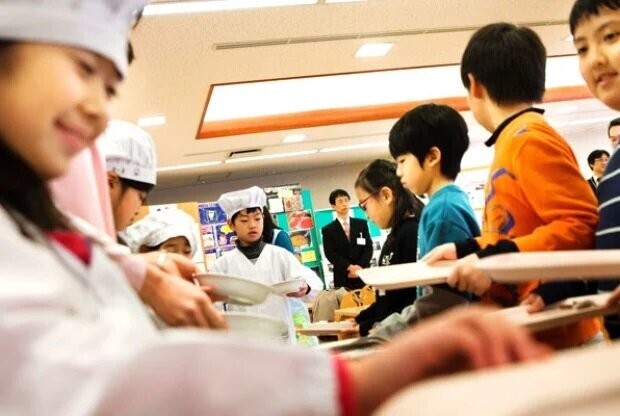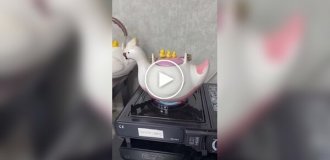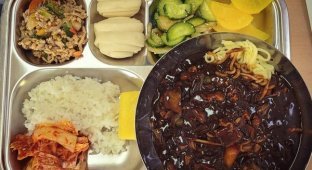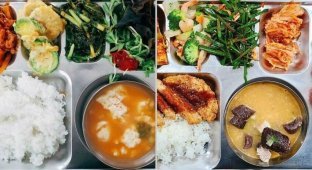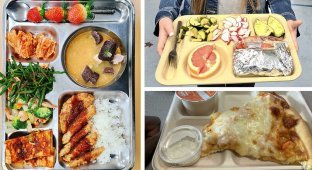What children are fed in Chinese and Japanese schools (16 photos)
In Japan and China, a lot of attention is paid to baby food. From In this article, you will learn how and what schoolchildren are fed in these countries. 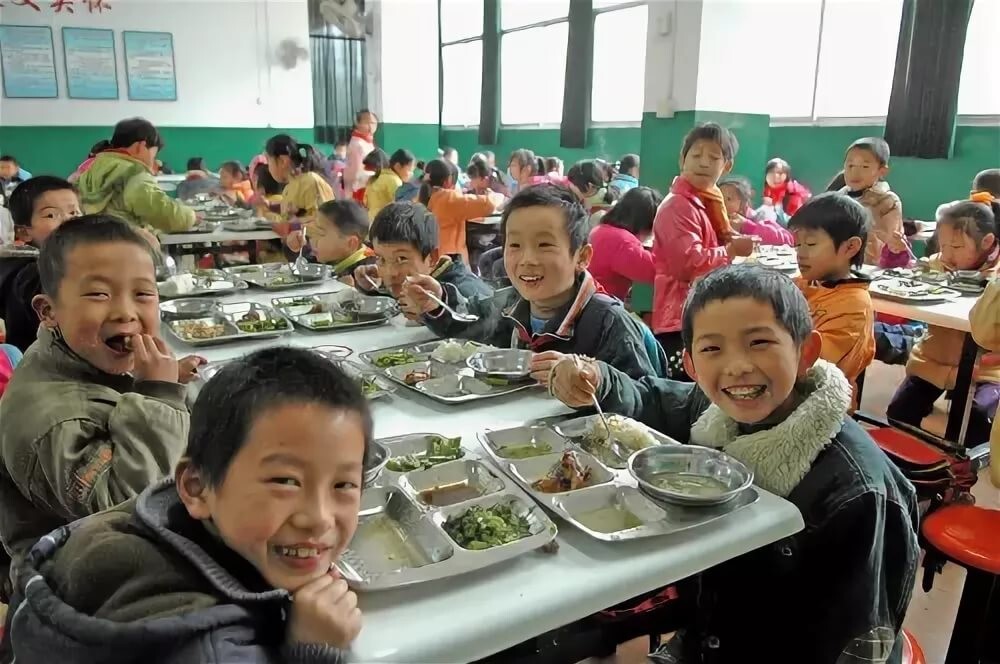
School cafeteria in China
The younger generation from an early age should know the value of food and get accustomed to the traditional diet that will accompany them on throughout life. As a rule, lunches in Chinese schools are divided into paid, free and "home" when the child brings food with him to special box. 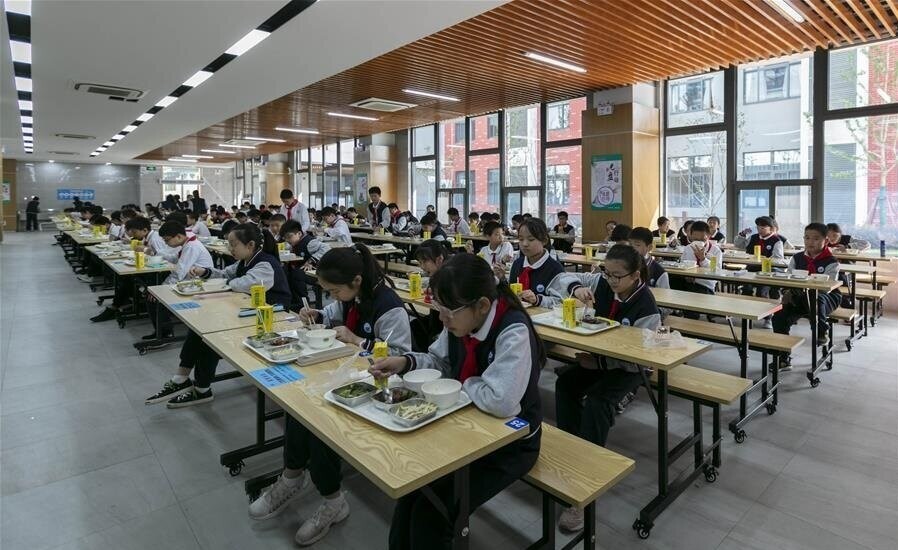
Paid meals are usually not very expensive, but include a slightly larger variety of dishes, as well as fresh fruit and yogurts. 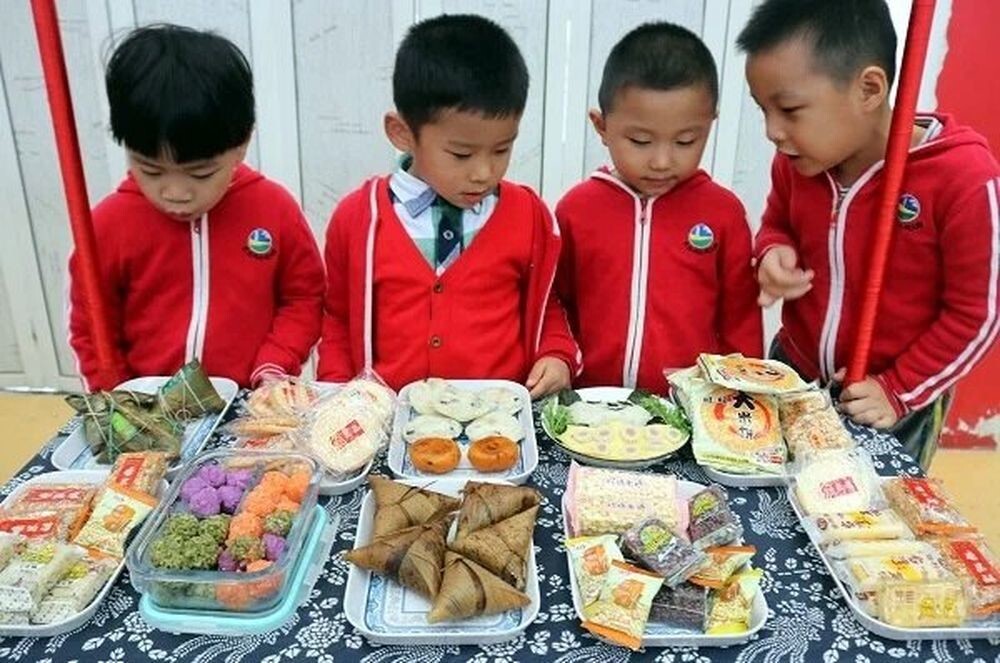
In addition, they are served to the child already assembled, in special boxes, when as a free lunch the child receives in canteen on the distribution line. But in general, the menu of paid and free lunches very similar, as they consist of meat, vegetables and rice. 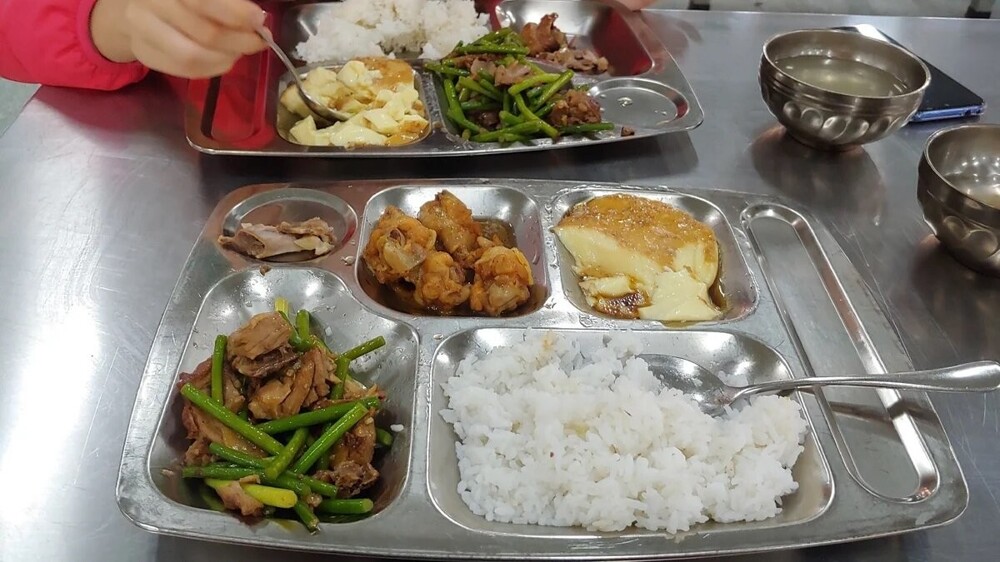
The lunch break in Chinese schools usually lasts an hour, so that the guys had time not only to eat properly, but also a little relax and have fun before the start of the next class. Usually, a standard lunch in a Chinese school consists of meat and vegetable dishes on choice, as well as soup and, of course, rice. 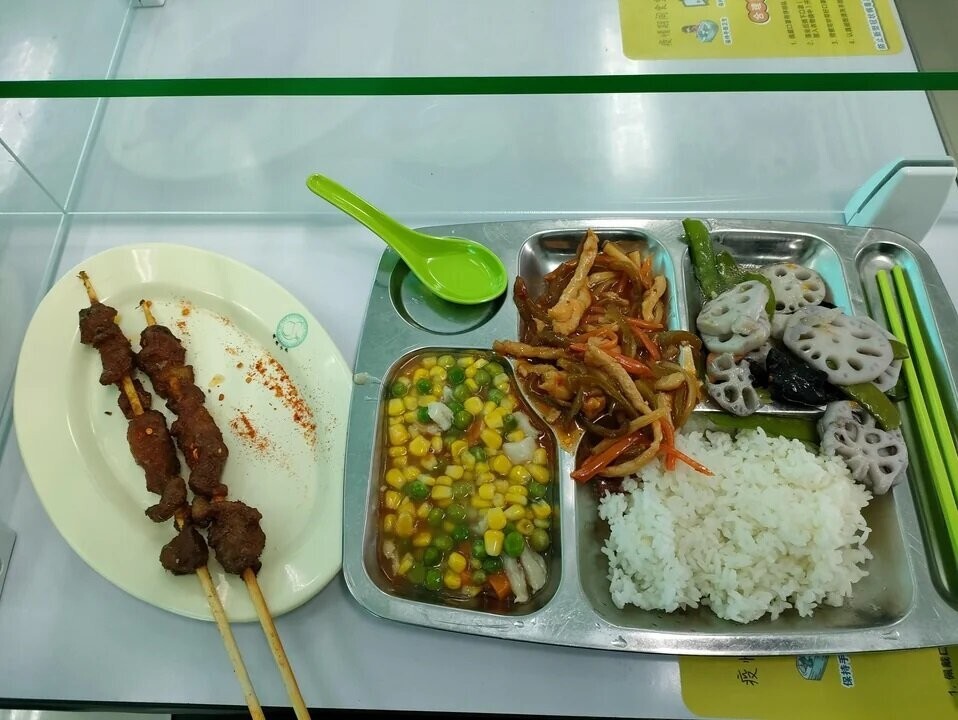
By the way, Chinese school lunches are radically different not only in the variety of dishes and their compositions, but also in the volumes. servings. In China, there is no concept of "first, second and compote", therefore, on the tray of a Chinese student can fit two, three, and four portions of various foods. 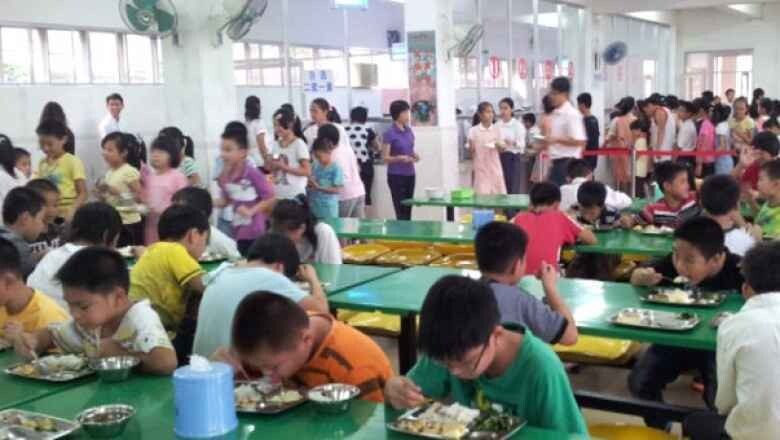
Potatoes are most often used as hot dishes with stew or just meat in fatty gravy, scrambled eggs with tomatoes, noodles with chicken or beef. In addition to hot Chinese students can take a serving of tofu cheese or seasoned vegetables special sauce. 
A separate place in the menu of Chinese schools, of course, occupies rice, and here the choice of the child is offered as a ready-made rice dish with all kinds of additives, and empty boiled or cooked on a couple of rice In this form, Chinese schoolchildren eat it as a snack or they replace bread with them, because, as you know, Asians do not like flour too much. 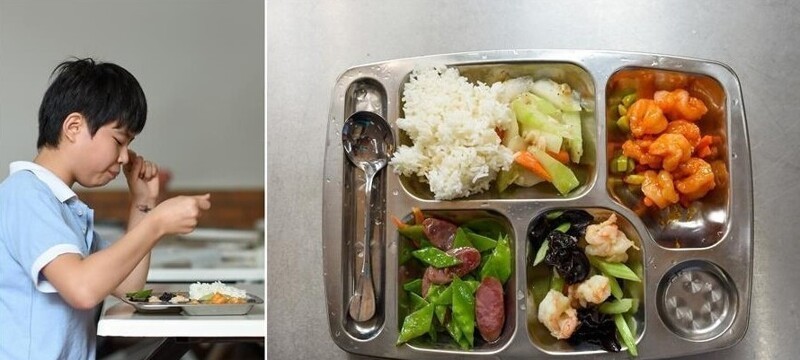
But Chinese schools cannot boast of a variety of drinks. can. Most often, at lunch, Chinese schoolchildren drink water, juices or juiced lemonades. Tea, surprisingly, in China is not too love, and the adult population, in principle, prefers coffee. And so just as children are not supposed to have coffee, so do Chinese schoolchildren “to be content” with packaged juices, which, in principle, you will agree, not bad at all! 
Chinese students drink water
Unlike China, where most meals in school canteens fatty and high-calorie, since their primary task is to provide children with a large supply of energy for the whole day, in Japan, a school lunch is it's a whole philosophy. In Japanese schools, children are not just fed, they are taught food culture, talk about the benefits and harms of certain products and explain how to make a diet. 
Lunch at a Japanese school
By the way, among developed countries, it is Japan that has the most low rate of childhood obesity, but small Japanese do not suffer from underweight. One of the secrets themselves are the inhabitants of the country Rising Sun is considered a school lunch program. 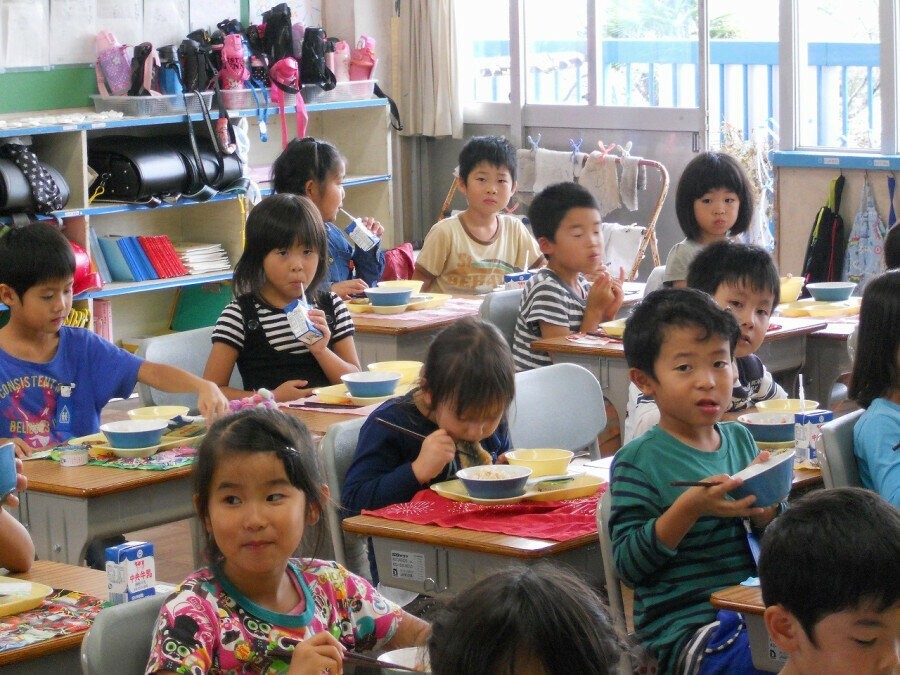
Almost all Japanese schools have nutritionists who, in fact, they are developing a school nutrition program. And these programs include not only mandatory lunches, but also snacks, so that during the day the child does not feel hungry. As a snack Japanese schools ban packed lunches - sandwiches and other fast food. For easy quenchingoh hunger, vegetables are best and fruits. 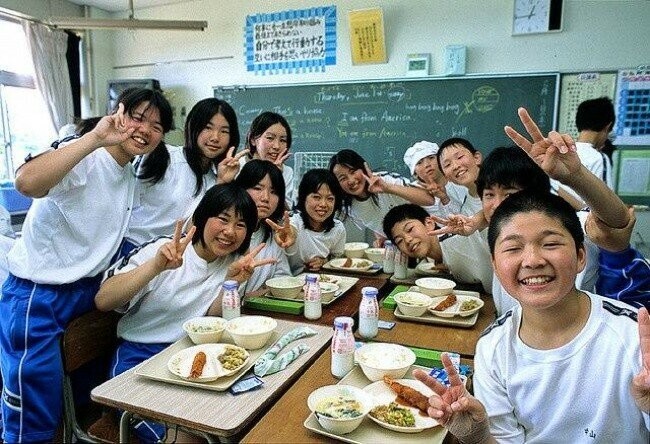
In most Japanese schools, lunches are paid, but many families receive subsidies from the state for food for their children. Some schools prepare their own meals for their pupils, and some ready-made food is brought from special production workshops. A standard school lunch usually consists of rice, grilled fish, spinach and wheat germ, miso soup with pork, milk and dry prunes or other fruit. 
Each lunch serving contains approximately 600-700 calories balanced between carbohydrate-containing foods, as well as meat or fish and vegetables. And in general, school lunches are designed with such a purpose as to ensure that the child receives those nutrients which, as a rule, he lacks in homemade food. 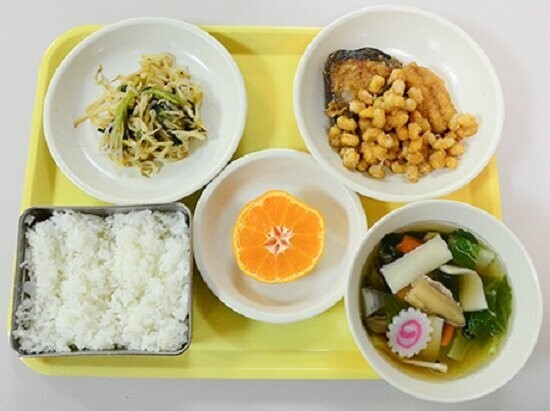
But that's not all. As mentioned above, for the Japanese school lunch is a real philosophy. That is why the Japanese schoolchildren, unlike the Chinese, who go to lunch in school cafeteria, they eat right in the classroom. children teach to monitor their diet, so they help each other carry and even serve dishes. 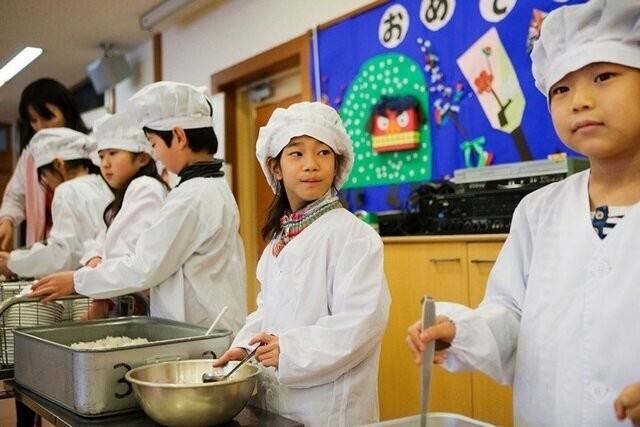
Also during lunch, Japanese schoolchildren often a documentary film is broadcast that explains the value of those or other food elements contained in the school lunch. So simple way schools in Japan instill in children a culture of food and talk about food values. 